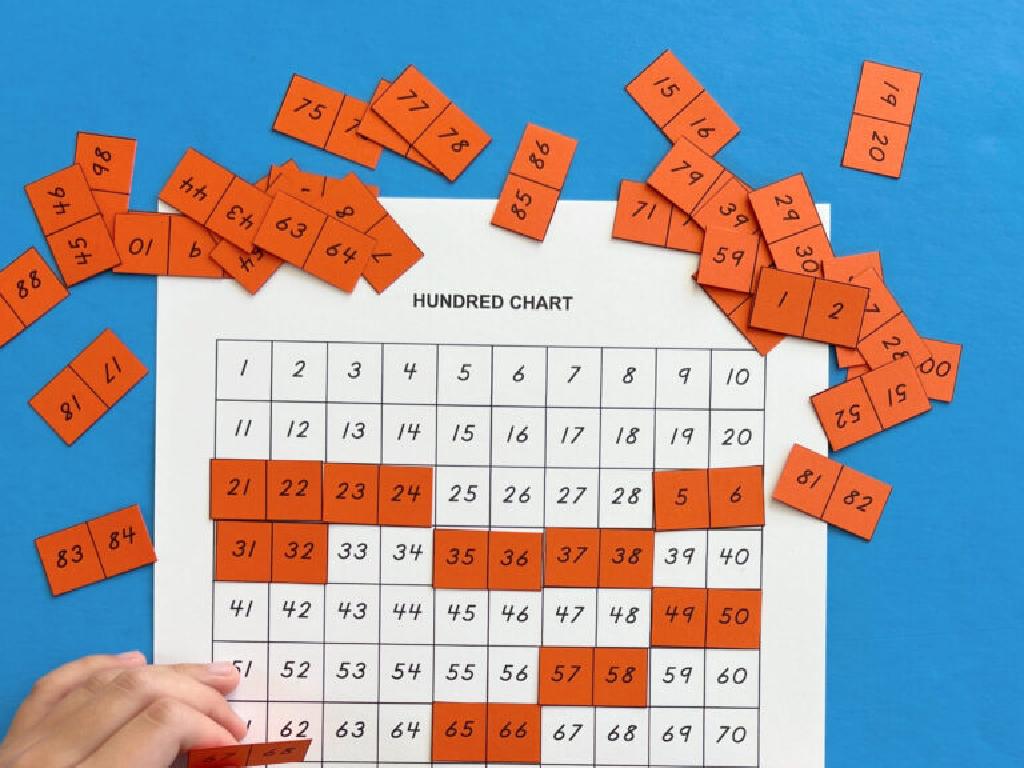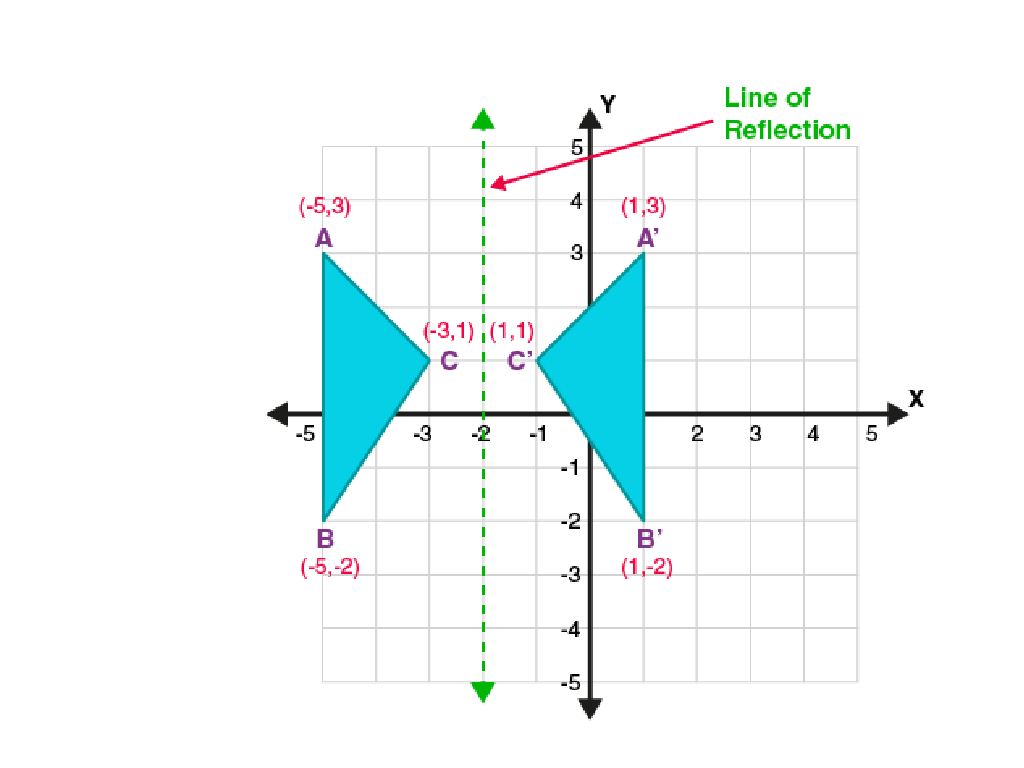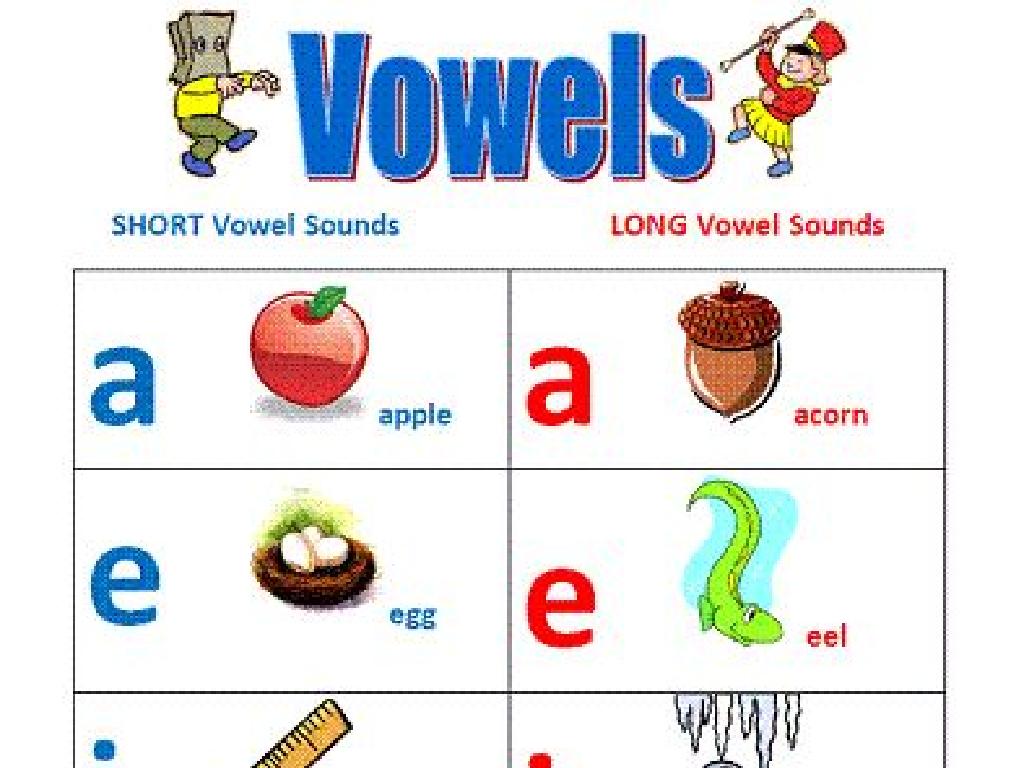Complete A Table And Graph A Linear Function
Subject: Math
Grade: Eighth grade
Topic: Linear Functions
Please LOG IN to download the presentation. Access is available to registered users only.
View More Content
Introduction to Linear Functions
– Define linear functions
– A function with a constant rate of change, represented by a straight line
– Linear relationships in life
– Examples: speed of a car over time, savings account growth
– Steps to complete a table
– Identify variables, fill in values, calculate outputs
– Graphing the function
– Plot points from the table, draw a line through them
|
Begin the lesson by defining linear functions and emphasizing their constant rate of change, which is visually represented by a straight line on a graph. Provide real-life examples to illustrate linear relationships, such as the consistent speed of a car or the steady growth of money in a savings account. Explain the process of completing a table for a linear function by identifying the independent and dependent variables, filling in known values, and calculating the corresponding outputs. Finally, demonstrate how to graph the linear function by plotting the points from the table onto a coordinate plane and drawing a line through them. Encourage students to participate by coming up with their own real-life linear relationships and plotting them.
Understanding Linear Functions
– Define a linear function
– A function with a constant rate of change
– Equation form: y = mx + b
– m is the slope, b is the y-intercept
– Recognize linear functions
– From tables, graphs, and equations
– Graphing on the coordinate plane
– Plot points and draw a straight line
|
A linear function is one of the most fundamental concepts in algebra, characterized by a constant rate of change, which can be visually represented as a straight line on a graph. The standard form of a linear equation is y = mx + b, where ‘m’ represents the slope, indicating the steepness of the line, and ‘b’ is the y-intercept, the point where the line crosses the y-axis. Students should learn to identify linear functions not just from equations, but also from tables of values and graphical representations. When graphing, they should practice plotting points generated from the function’s equation and then connect these points with a straight line. This slide will serve as a foundation for understanding how to complete a table and graph a linear function.
Tables and Linear Functions
– Completing a function table
– Fill in missing values using the function’s formula
– Calculating y from x using equation
– For each x, apply y = mx + b to find corresponding y
– Recognizing patterns in tables
– Look for equal differences in y when x increases by equal intervals
– Graphing the function
– Plot the (x, y) pairs and draw the line
|
This slide introduces students to the concept of linear functions and how to represent them using tables and graphs. Start by explaining how to complete a table for a given linear function by applying the function’s formula to calculate missing values. Emphasize the importance of using the linear equation, typically in the form y = mx + b, to find the y-value for each x-value provided. Highlight the pattern that emerges in the table, where the y-values change at a constant rate as x-values increase by equal amounts. This pattern is the ‘linear’ in linear functions. Finally, guide students on how to take the completed table and plot the points on a graph to visualize the linear relationship. Encourage students to practice with different linear equations to become comfortable with the process of completing tables, identifying patterns, and graphing.
Graphing Linear Functions
– Plot points from a table
– Use the table values to plot points on the coordinate grid.
– Draw a line through points
– Connect the dots in a straight line; it represents the function.
– Comprehend slope and y-intercept
– Slope: the steepness; y-intercept: where the line crosses the y-axis.
– Relate graph to equation
|
This slide aims to guide students through the process of graphing a linear function by plotting points from a table onto a graph and then drawing a line through these points. Emphasize the importance of accurately plotting each point and the technique for drawing a straight line. Discuss how to interpret the slope as the rate of change and the y-intercept as the starting value of the function. Relate these concepts back to the equation of the line in the form y = mx + b, where m is the slope and b is the y-intercept. Provide examples and encourage students to practice with different linear functions to solidify their understanding.
Completing Tables and Graphing Linear Functions
– Step-by-step example walkthrough
– We’ll go through a detailed example together
– Fill in a table with x and y values
– Use the function to calculate y for each x
– Plot points on a graph
– Each (x, y) pair becomes a point on the graph
– Draw the linear function
– Connect the points to reveal the linear function
|
This slide is aimed at guiding students through the process of completing a table with values for a linear function and then graphing it. Start with a clear example, showing the linear function equation and how to calculate y for different x values. Once the table is filled, demonstrate how to plot these values on the coordinate graph. Emphasize the importance of accurate plotting to ensure the correct shape of the graph. After plotting the points, show how to draw a straight line that connects them, which represents the linear function. Encourage students to ask questions throughout the process and provide additional practice problems to reinforce the concept.
Practice Time: Graphing Linear Functions
– Complete a table for a linear function
– Graph the function from the table
– Discuss slope and y-intercept
– Slope is the rate of change, y-intercept is where the line crosses the y-axis
– Partner discussion on methods used
– Share strategies for finding slope and y-intercept with your partner
|
This slide is designed for a hands-on practice activity in class. Students will be given a linear function and will fill out a table of values for that function. They will then use the table to graph the function on a coordinate plane. After graphing, students should discuss with a partner how they determined the slope and y-intercept of the function. Teachers should circulate to assist and ask probing questions to ensure understanding. Possible activities: 1) Assign different linear functions to pairs to complete and compare. 2) Have students find the slope and y-intercept without a table. 3) Create a real-world problem where students must apply their function. 4) Use an online graphing tool to check their graphs. 5) Encourage students to explain their process in their own words.
Class Activity: Crafting Linear Functions
– Pair up and create a linear function
– Fill in a table with function values
– Use the function to calculate y for at least 5 different x values
– Graph your function on a coordinate plane
– Plot the points from the table to visualize the function
– Present your graph to the class
|
This activity is designed to reinforce students’ understanding of linear functions by having them actively participate in the creation process. In pairs, students will come up with their own linear function, which encourages collaboration and creativity. They will then use their function to complete a table of values, which helps them see the relationship between x and y values in a linear function. After completing the table, students will graph these values on a coordinate plane to visually represent their function. Finally, each pair will present their graph to the class, which will help them practice their communication skills and allow for peer learning. Possible variations for different pairs could include using different slopes or y-intercepts, comparing functions, or even creating word problems based on their functions.
Wrapping Up: Linear Functions & Homework
– Recap of linear functions
– Significance in real-world applications
– Used in economics, science, and more
– Homework: Real-world linear function
– Find an example like speed or savings
– Create a table and graph
– Use the example to complete a table and plot the graph
|
As we conclude today’s lesson on linear functions, remind students of the key concepts covered, including how to identify linear relationships, complete tables, and graph linear functions. Emphasize the importance of understanding linear functions as they apply to various fields such as economics, physics, and everyday life. For homework, students should find a real-world example of a linear relationship, such as the relationship between time and speed or the amount saved over time. They should create a table of values for their chosen relationship and use it to graph the function. This exercise will reinforce their understanding and show them the practical application of linear functions. Encourage creativity in their examples and remind them to be ready to discuss their findings in the next class.





